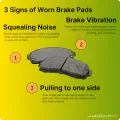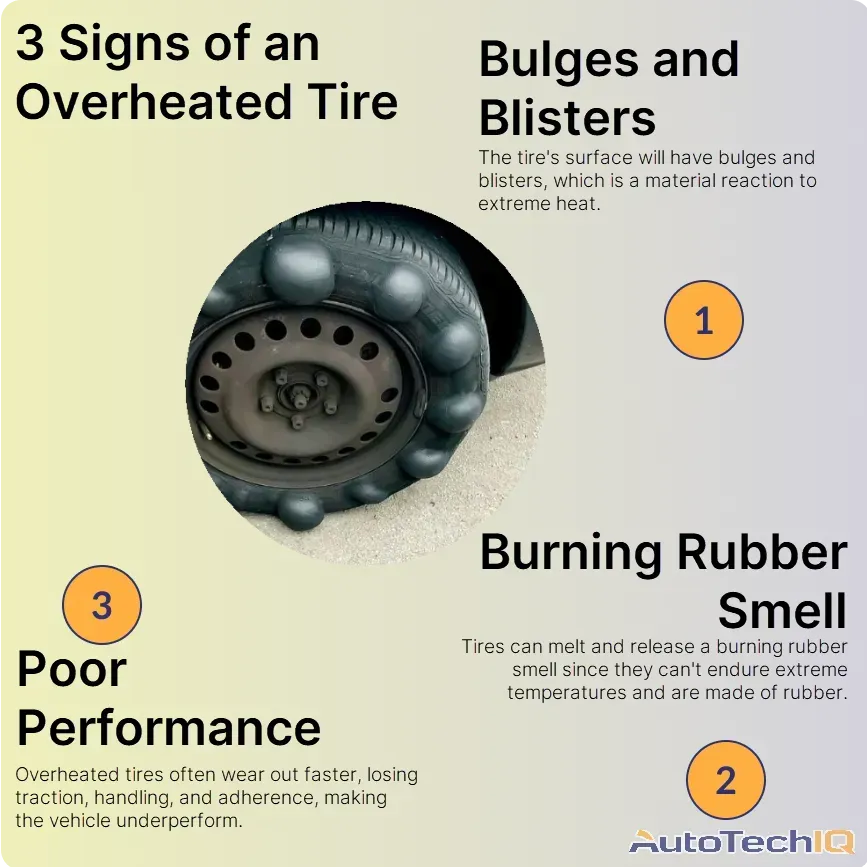

The main sign that your vehicle's tires are overheating is a burning rubber smell. Rubber tires can't endure extremely hot temperatures and might overheat due to brake/asphalt friction, causing them to release a strong rubbery smell.
Your vehicle's tires' condition and reliability depend on various systems like the brakes, suspension, steering, etc. If any of these systems fail, the tires might be at risk of wearing out excessively, which can bring a burning rubber smell. Therefore, although the tires might cause the smell, the real problem possibly comes from a different part of your vehicle.
- Key function: The tires distribute weight and support the vehicle over any terrain while providing proper traction and adherence. They're vital to the vehicle's comfort, safety, speed, handling, braking, and overall performance.
Overheating tires often wear out faster, which can significantly lower a vehicle's reliability and make it actually unsafe. Note that tires don't overheat due to summer heat, but due to technical or mechanical problems affecting them.
- Safety: Bad/worn tires mean low adherence, traction, stability, handling, braking, etc., a vehicle can easily lose control and cause accidents if it doesn't have proper tires.

Burning rubber smell
An overheating tire is likely getting extra friction from brake, suspension, or steering system components. This means that something is either rubbing against the tire as the vehicle drives or increasing asphalt friction by sticking it.
In both cases, the tire is overstressing and getting more friction, which also means more heat. This heat can cause the tire to burn, releasing a burning rubber smell. The burning smell is the most common sign that something is affecting a vehicle's tires.
Squealing noise
The vehicle tire might be overheating due to a sticking caliper. In this case, it's usually focused on a specific wheel; it's also common to notice the vehicle squealing and pulling to one side.
The caliper is a brake component that applies the brake pads around the rotor, reducing the wheel's spinning speed. If a brake caliper goes bad, it might stick partially applied on the rotor, causing extra friction.
Extra friction on the brake rotor means higher temperatures affecting the entire wheel, including the tires. This commonly wears out the brake pads, causing them to overstress and squeal around the rotor quickly. Eventually, the tire overheats and wears out faster.
Other signs
- Tire Pressure Warning Light
- Visible Tire Deformities (bulges, blisters, etc.)
- Tire Discoloration
- Decreased Performance (traction, handling, etc.)
- Cracked/Melted Tire Treads
Possible fixes
- Tire replacement: Overheated tires can have their structure damaged, necessitating replacement to ensure safety and proper performance.
- Tire pressure sensor replacement: Faulty sensors might provide incorrect pressure readings, leading to improper inflation and overheating; replacing them ensures accurate monitoring.
- Tires balancing: Unbalanced tires cause uneven wear and excessive heat build-up, so balancing them helps distribute weight evenly and reduces overheating risks.
- Wheel Replacement: Damaged or warped wheels can cause improper tire contact with the road, leading to an overheated tire; replacing them restores proper alignment and function.
- Brake caliper/rotors/pads replacement: Overheating brakes can transfer heat to the tires; replacing worn or malfunctioning brake components prevents excessive heat transfer.
- Brake System Upgrade: This may include replacing various brake system components with higher performance or specialized parts. The upgrade might be a personal decision to avoid future tire overheating or engage in high-performance maneuvers while preventing the tire from overheating.
- Axle shaft rear replacement: A damaged or misaligned axle shaft can cause improper tire rotation and heat build-up, so replacing it ensures smooth and even tire movement.
- Suspension repair: Faulty suspension can lead to uneven tire contact with the road, increasing friction and heat; repairing it ensures proper tire alignment and reduces overheating.
Frequently Asked Questions
How should you handle an overheated tire?
If you suspect an overheated tire while driving, prioritize safety. Pull over to a cool, well-ventilated location and turn on your hazards. Don't touch the tire as it will be extremely hot, and check your vehicle's tire pressure monitoring system on the dashboard. Let the vehicle cool down for at least 30 minutes before inspecting the tire for damage or bulging; this also helps to prevent tire blowouts. Once cool, you can cautiously check the tire pressure (if the car is still drivable) and verify if it shows proper tire inflation, but avoid driving further unless you replace the tire or have a professional inspect it.
At what temperature do tires burst?
Tire blowouts don't specifically happen from a specific air temperature, but high ambient temperatures can exacerbate the issue. The bigger concern is internal pressure. Overinflated tires or those already weakened by damage are more likely to fail around 195-200 degrees Fahrenheit (90-93 degrees Celsius) as the trapped air expands and weakens the rubber, making some tires explode. Regularly maintaining proper tire pressure and inspecting for damage is key to preventing a tire blowout.
Can heat make your tires flat?
Heat or hot weather itself won't directly flatten a tire, but it can indirectly cause problems. As temperature rises, the air pressure inside your tires increases. In this case, the tire pressure gauge on the dashboard likely indicates excessive air pressure. This excess pressure can stress weak spots or overinflated tires, leading to a heat-related tire blowout that appears as flats. To avoid this, keep your tires properly inflated for the current temperature.
Other news
-
Car is Squealing When Driving

-
What is Preventative Maintenance and What Are The Benefits of it?

-
JobViewIQ - DVI Process Training - Part of the Auto Care Alliance Benefits

-
7 Signs of Clogged AC Components
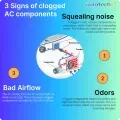
-
How Much Does a Transmission Fluid Change Cost?
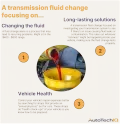
-
7 Signs of a Leaking Axle Seal
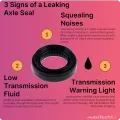
-
8 Signs of a Bad Brake Pad
